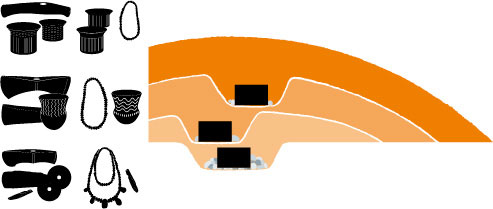Barrows with single graves
Single burials were especially common in western Denmark and they have given their name to the period of “the Single Grave Culture”. Burials were situated in fairly small barrows.
The earliest burials (c. 2800-2600 BC) consisted of deep graves under a low mound. Later, in the period from 2600 to 2350 BC, new graves were often dug into an existing barrow. At the same time the barrow was enlarged. A fence of posts was erected around some barrows and children were buried in small cists at the outer edge of the mound.


